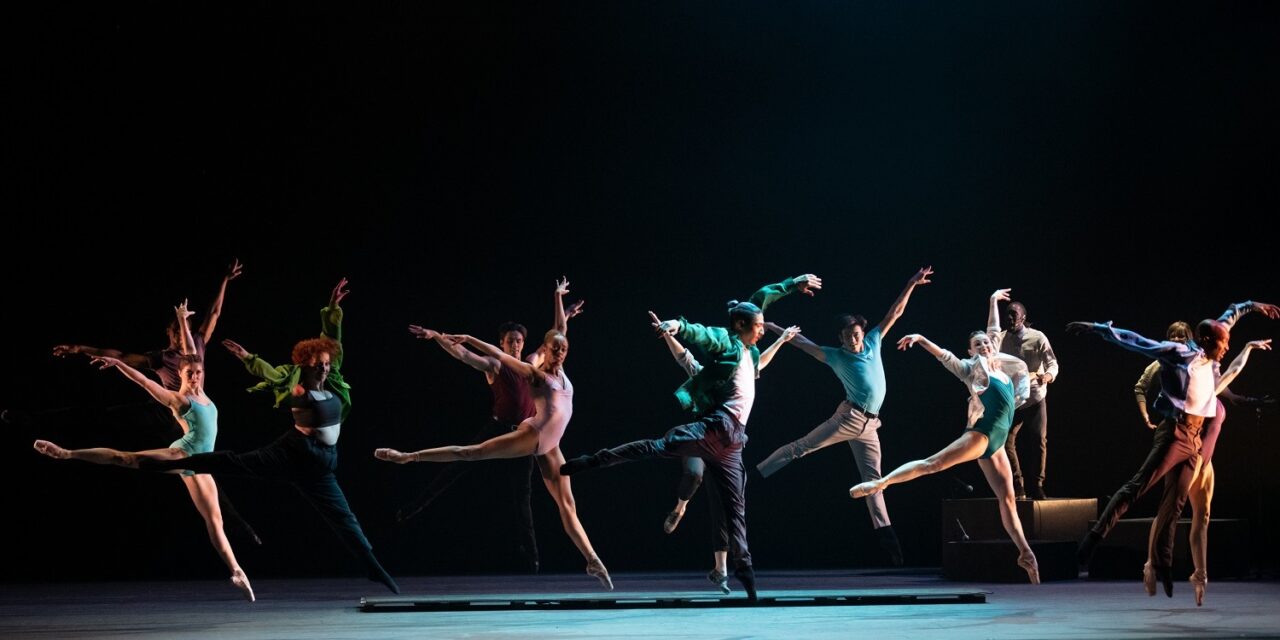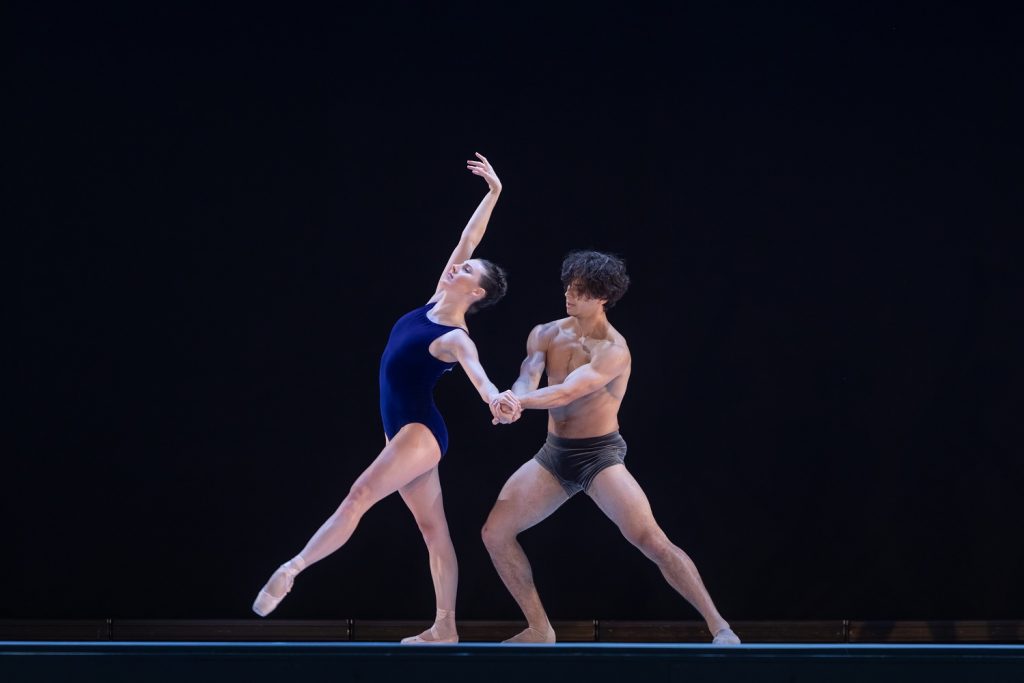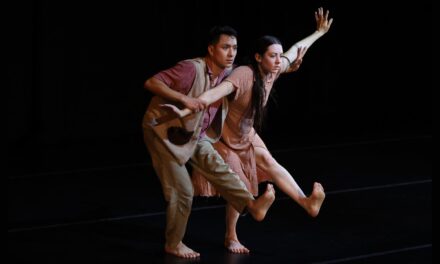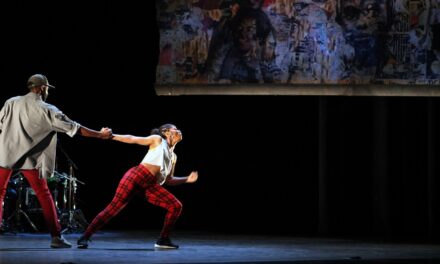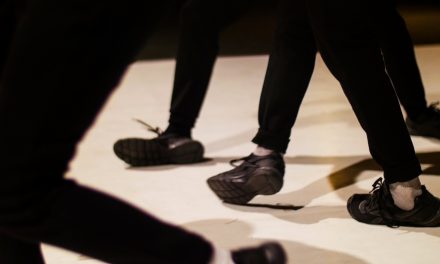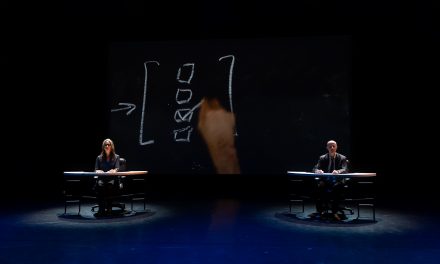As I sat watching Tiler Peck at the start of the program, I vividly remembered the little girl I first saw in choreographer, Marguerite Derricks’ class. She was unbelievable then and is phenomenal now. She is a poster child for versatility and virtuosity, and she has managed to assemble a company of artists that share her talents. Ms. Peck has described Turn It Out with Tiler Peck as “a love letter to dance” and the program was clearly that!
The program at the Segerstrom Center for the Arts opened with Thousandth Orange choreographed by Ms. Peck. The dancers were costumed in pastel leotards and tights from head to toe. There was an elegant simplicity to the movement and the six dancers performed with a fluidity that mirrored the piano and strings that played. The manner in which the dancers moved back to the opening pose was an amazing resolution to the piece.
Swift Arrow choreographed by Alonzo King was a study in sensuality. The opening of the ballet was like a challenge of virtuosic footwork and staccato movement performed to music that reflected the movement. Tiler and Roman Mejia exhibited their skill and expertise to the utmost and then seemed to melt into one another’s arms. The music changed and the movement changed. Music and movement became one. The partnering was so creative, interesting, and sensual. Both dancers appeared to continually caress one another with such gentleness and care while moving through space effortlessly. Lifts came without preparation, they seemed to just grow out of movement phrases.
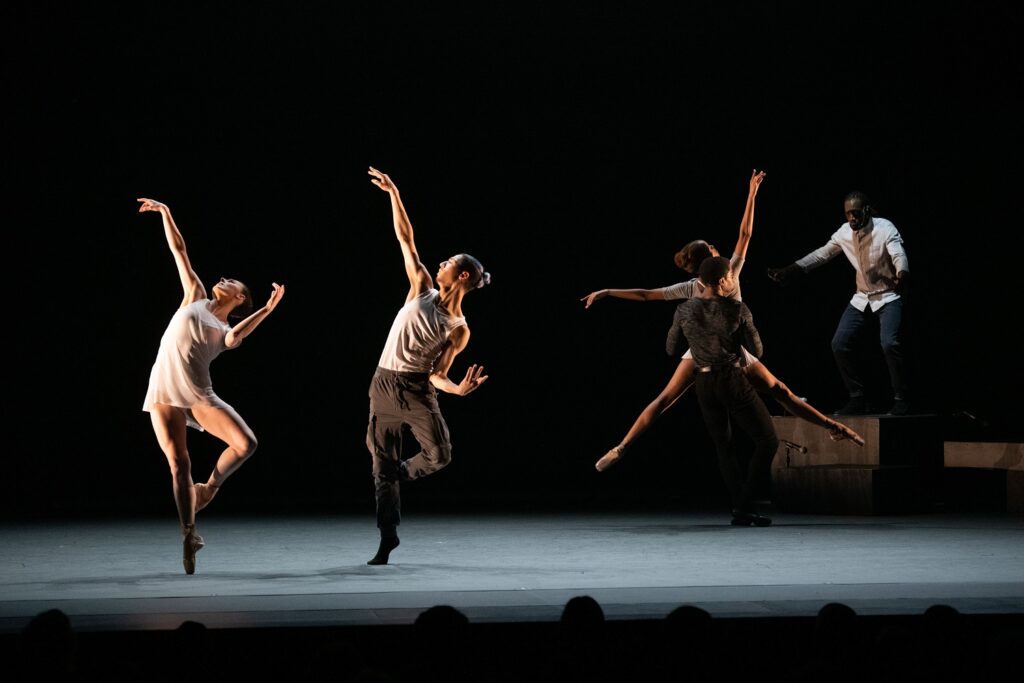
Turn It Out with Tiler Peck & Friends – “Time Spell,” choreographed by Michelle Dorrance – Photo by Christopher Duggan.
Michelle Dorrance’s Time Spell was the highlight of the evening and a nod to Peck’s versatility and love of many forms of dance. It was a genius merging of tap, ballet, contemporary, hip hop, and jazz dance. As if exciting dancing and choreography is not enough the music, characterized by layered vocals reminiscent of Al Jarreau and Bobby McFerrin, is as creative and interesting as the movement. This dance is pure joy! You see the artist’s unique personalities come to life as everyone is moving to the music in a totally different way with different movement phrases. It is as if each artist hears the rhythms and interprets them in their own special way and it is a sight to behold. As quickly as they are unique and improvisational in appearance, they move back into unison phrases that are totally unexpected. Interesting costumes of different shades, materials, and styles accompanied lighting to accentuate the constant changes between soloists, unison, canon, and dance forms. The dancers demonstrated an exciting versatility born of the technical brilliance, strength, and power that enabled them to perform a multitude of dance forms with total abandon and absolute control. The audience leapt to their feet with shouting and applause when the dance came to an end. The woman sitting beside me shouted, “That was amazing!”
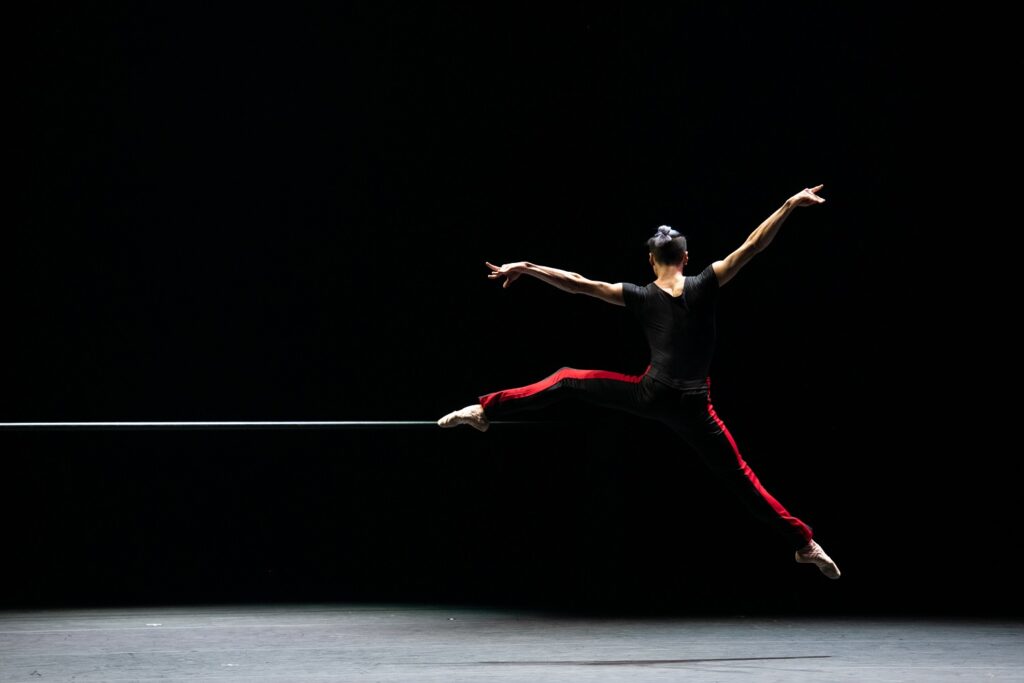
Turn It Out with Tiler Peck & Friends – Lex Ishimoto in William Forsythe’s “The Barre Project” – Photo by Christopher Duggan
The closing ballet of the concert was William Forsythe’s The Barre Project, Blake Works II. The entire ballet, performed around a ballet barre was a great vehicle to showcase the technical prowess of Ms. Peck, Lex Ishimoto, Brooklyn Mack, and Roman Mejia. In the beginning of the dance, the barre is integral to the choreography and the dancers use it as a partner. As the dance progresses the dancers move beyond the barre more and more until it is of minimal importance. The choreography was characterized by extremely fast and staccato movement phrases with equally fast directional changes. Ms. Peck’s petite allegro was sharp, clean, and seamless. She can sustain movements, articulate, and isolate her torso, then execute a perfect arabesque on pointe in rapid fashion. All the dancers have an opportunity to display their brilliant technique and musicality in solos, duets, and group sections. Time seems to stand still with the introduction of a film in which only the forearms and hands of dancers appear to be performing a “hand dance.” The hands move gently, fluttering and flowing over each other in time with the music playing. The music and movement are subtle and soothing. This dance is a live version of Forsythe’s Barre Project created for film during the pandemic lockdown and it is possible that this section might have worked better in the film then it does in this live version.
This was an evening focused on celebrating dance. There was minimal costuming, minimal lighting, but lots of fierce and fabulous dancing with virtuosic technique on display! Yes, Tiler Peck and company, you turned it out!
To learn more about the Segerstrom Center for the Arts, please visit their website.
Written by Leah Bass-Baylis for LA Dance Chronicle.
Featured image: Turn It Out with Tiler Peck & Friends – Cast of Time Spell by Michelle Dorrance – Photo by Christopher Duggan.

